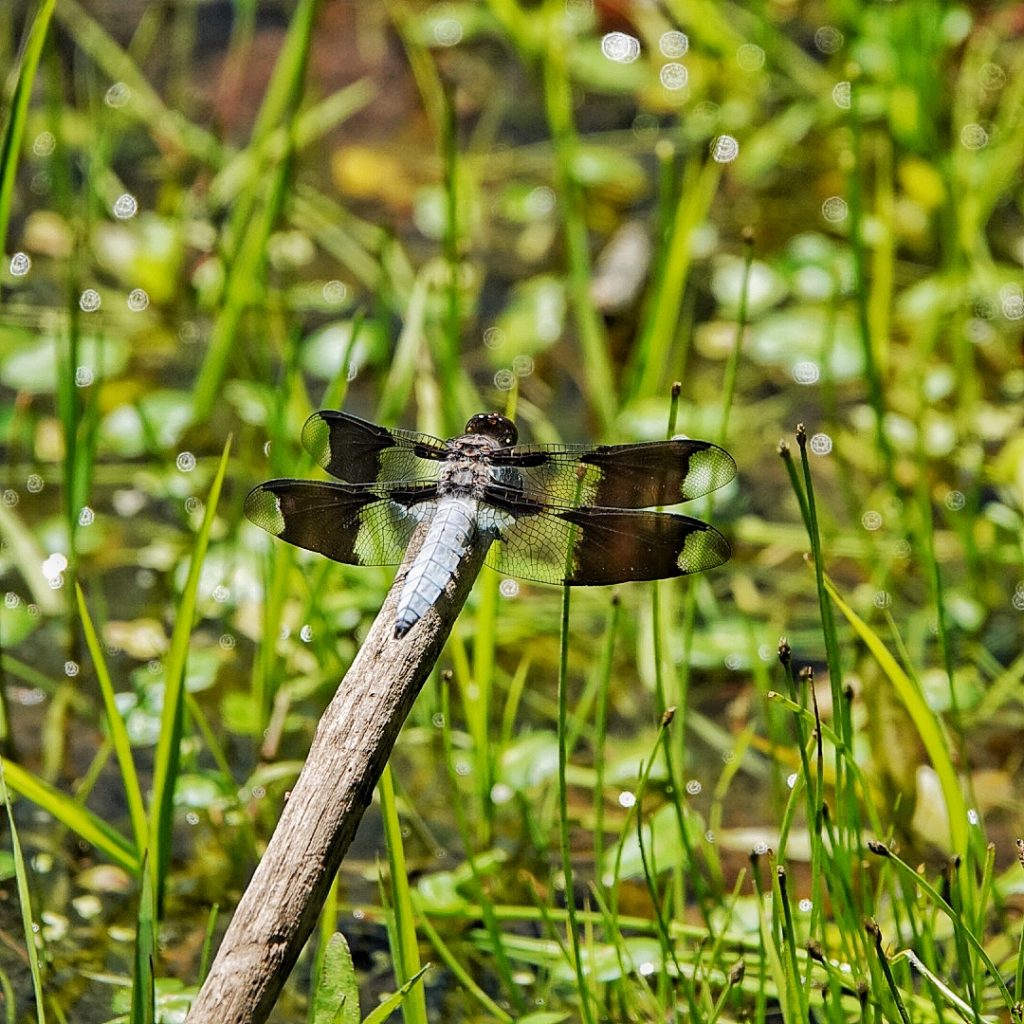
As I mentioned in ‘Evolution of a Recreational Naturalist – 10,000 Things of the Pacific Northwest ‘, it was finding a common whitetail dragonfly (Plathemis lydia) a dozen years ago whilst walking the Burnt Bridge Creek Trail in Vancouver, Washington that inspired me to drastically broaden the horizons of what I considered to be interesting and obsession-worthy wildlife. To quote shamelessly from my own blog: “A bold but simply patterned and very striking dragonfly landed on the asphalt trail about ten feet in front of me, right in the sweet spot where I could focus the binoculars on it, but where it filled enough space to see it very clearly. It was a couple inches long, with a bright, bluish white abdomen. Each wing was almost as long as the body, with large irregular black markings in the middle of the translucent wings, and smaller black marks near the base. At that time it was by far the coolest looking creature I’d ever seen through my binoculars. I tried to memorize every detail. Then it flew off. But I saw a few more on that walk that looked very similar, many of them perched on twigs or cattails, and also some that looked different. In fact, now that my eyes were really open to them, on the rest of that walk I saw dragonflies everywhere. I was so intrigued that I cut short my walk and rode my bicycle the five miles to the library to see what I could learn about them. And there I discovered Dennis Paulson’s ‘Dragonflies and Damselflies of the West’, which, after about 5 minutes of page turning, yielded not only my first dragonfly identification- Common Whitetail (Plathemis lydia), but, after reading through much of the natural history of this order that is contained in the first dozen or so pages, a new obsession.”
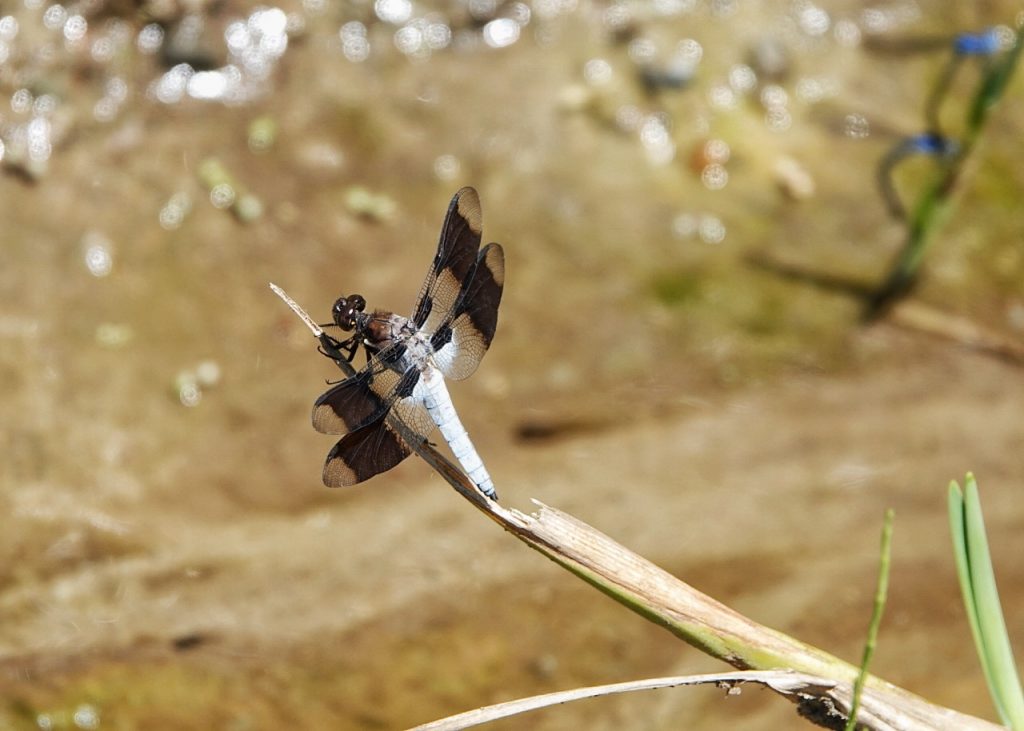
“Dragonflies are among the most ancient of living creatures. Fossil records, clearly recognizable as the ancestors of our present day odonates, go back to Carboniferous times which means that the insects were flying more than 300 million years ago, predating dinosaurs by over 100 million years and birds by 150 million.” Common Whitetail Dragonfly – North American Insects & Spiders
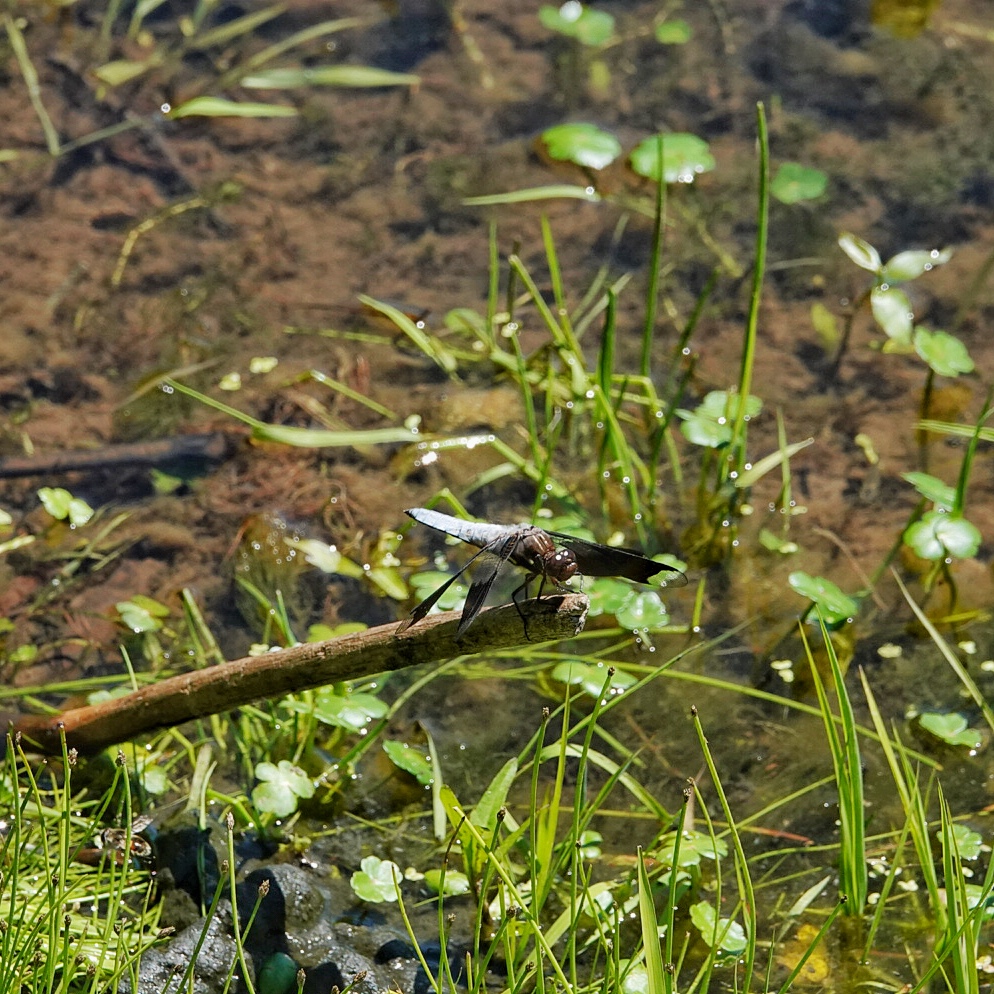
Male Plathemis lydia are very territorial, and will chase almost any dragonfly that enters the territory they are defending, especially other male common whitetails and those of other species with pruinose abdomens and some black on their wings. They frequently perch on the ground, but will also perch on sticks, vegetation, logs, rocks, etc., and they often return to the same perching site after their sallies and sorties. They usually fly low and fast, and in my experience they do not hover very often, except during brief, face to face confrontations with other males.
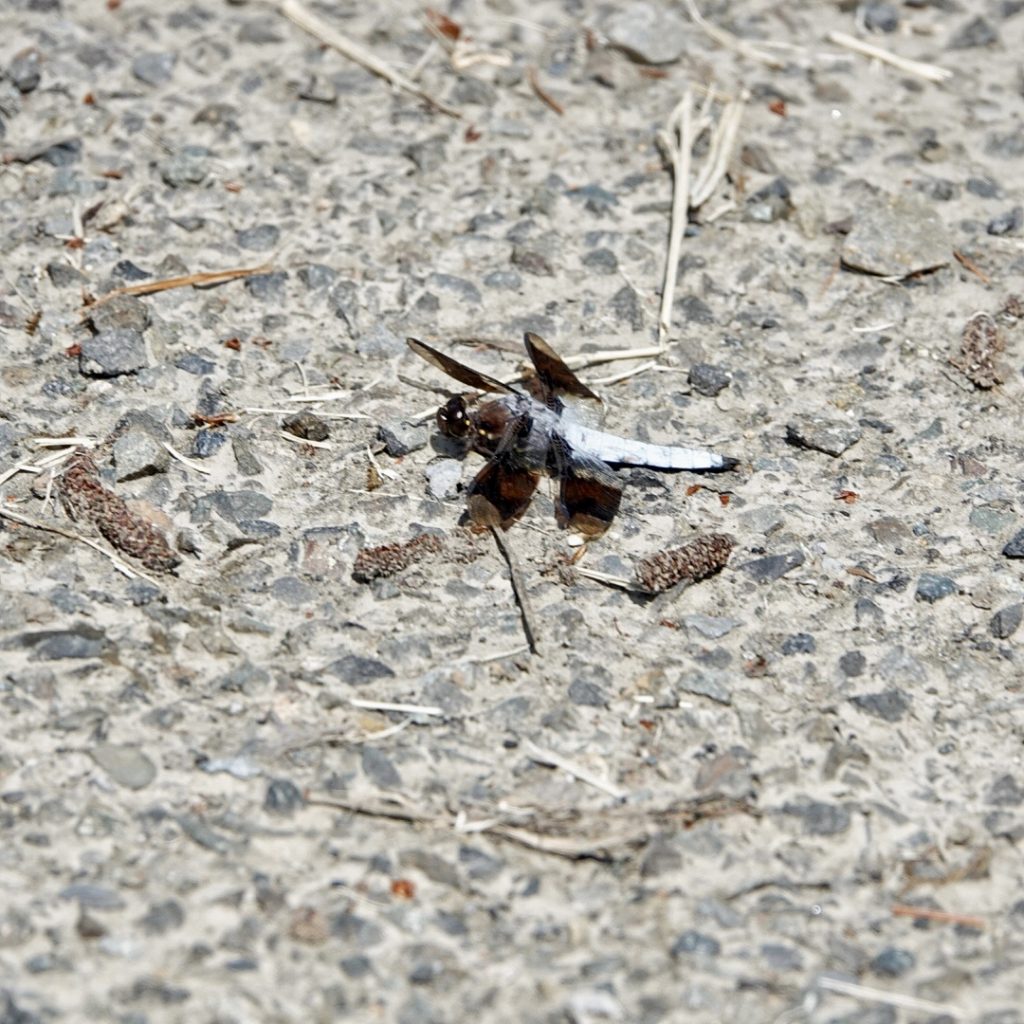
Description– Total length- 42-48mm, wingspan 64-74mm; “The stocky male has a pruinose white abdomen and a brown thorax. His wings have wide dark bands and small basal marks.” WOS: Plathemis lydia . “Females have a short, stout abdomen with several oblique dorsolateral white or pale yellow markings against a brown ground color; each wing has three black evenly-spaced blotches” Species Plathemis lydia – Common Whitetail – BugGuide.Net . Immature males have the wing markings of adult males, and the abdomen markings of a female.
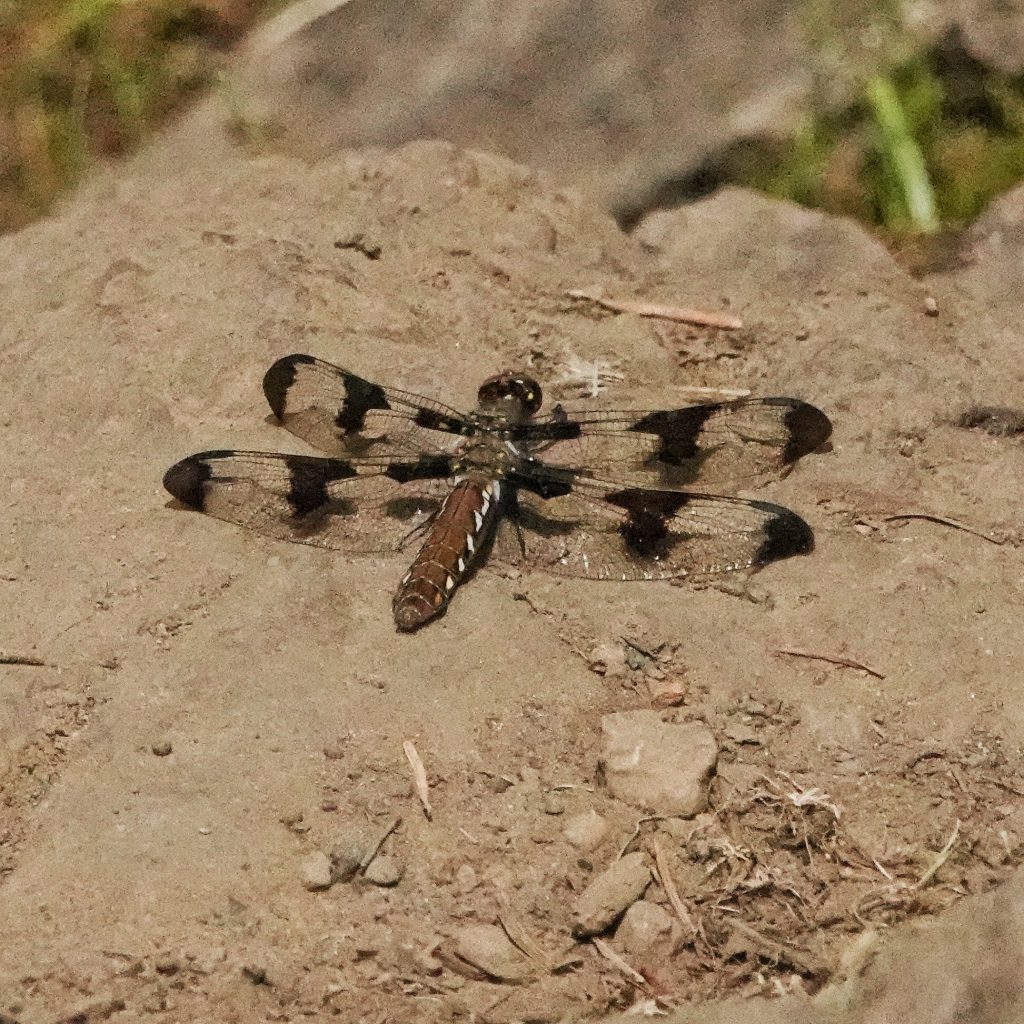
Similar species– Desert Whitetails (Plathemis subornata) males have extensive basal wing pruinosity, females have no dark markings at wing tips, and they are only found in se Oregon in our region; Widow skimmers (Libellula luctuosa) have large, dark basal markings on the wings, with pruinose midsections on the males; Libellula pulchella (12-spotted skimmers) females have straight and nearly contiguous light markings on the sides of the abdomen; Libellula forensis (8-spotted skimmer) females lack dark spots on the wingtips.
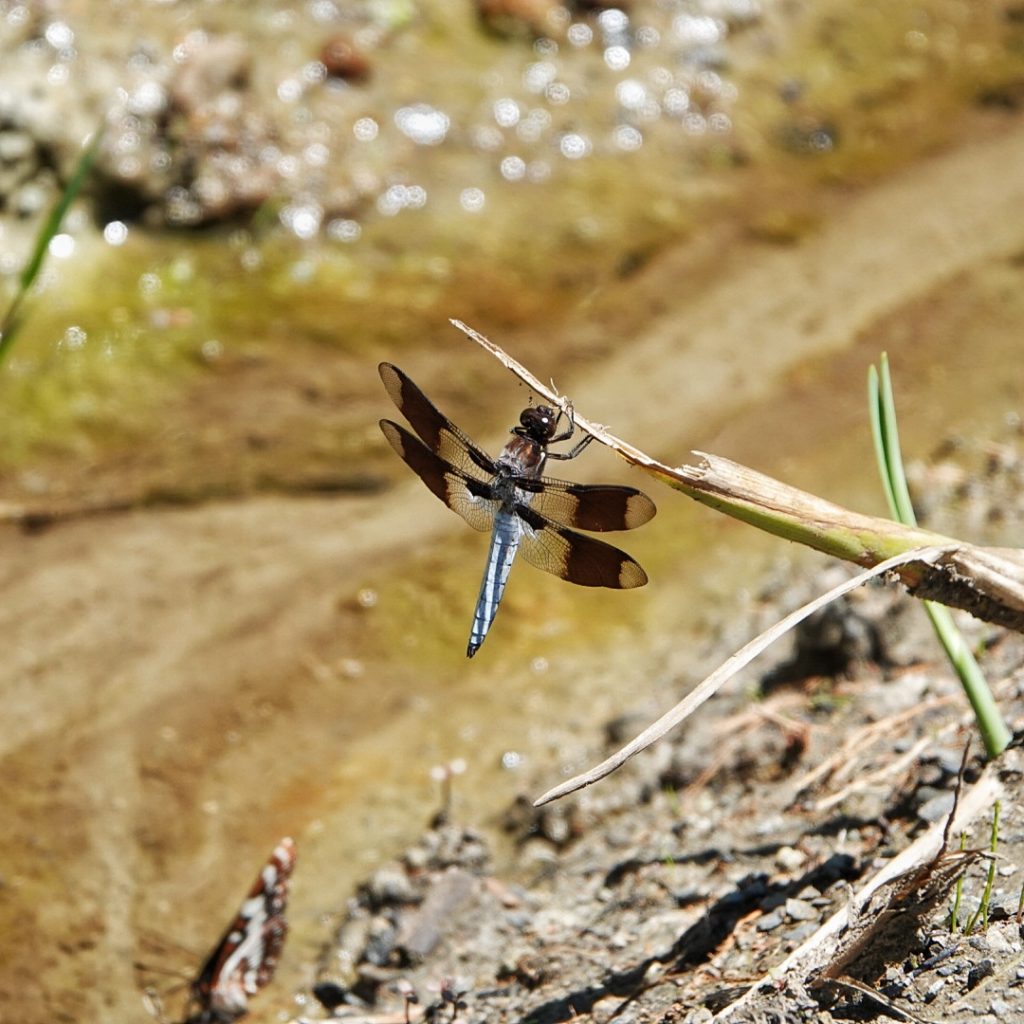
Habitat– “Ponds, lakes, marshes, streams; adults may also be found some distance from water.” Species Plathemis lydia – Common Whitetail – BugGuide.Net “Larvae on mud bottom and tolerant of a wide range of conditions, so adults often at wetlands that deserve the term ‘yucky’, for example, cattle-trodden stock ponds. Sometimes only species present.” Dennis Paulson, “Dragonflies and Damselflies of the West”; 2009.
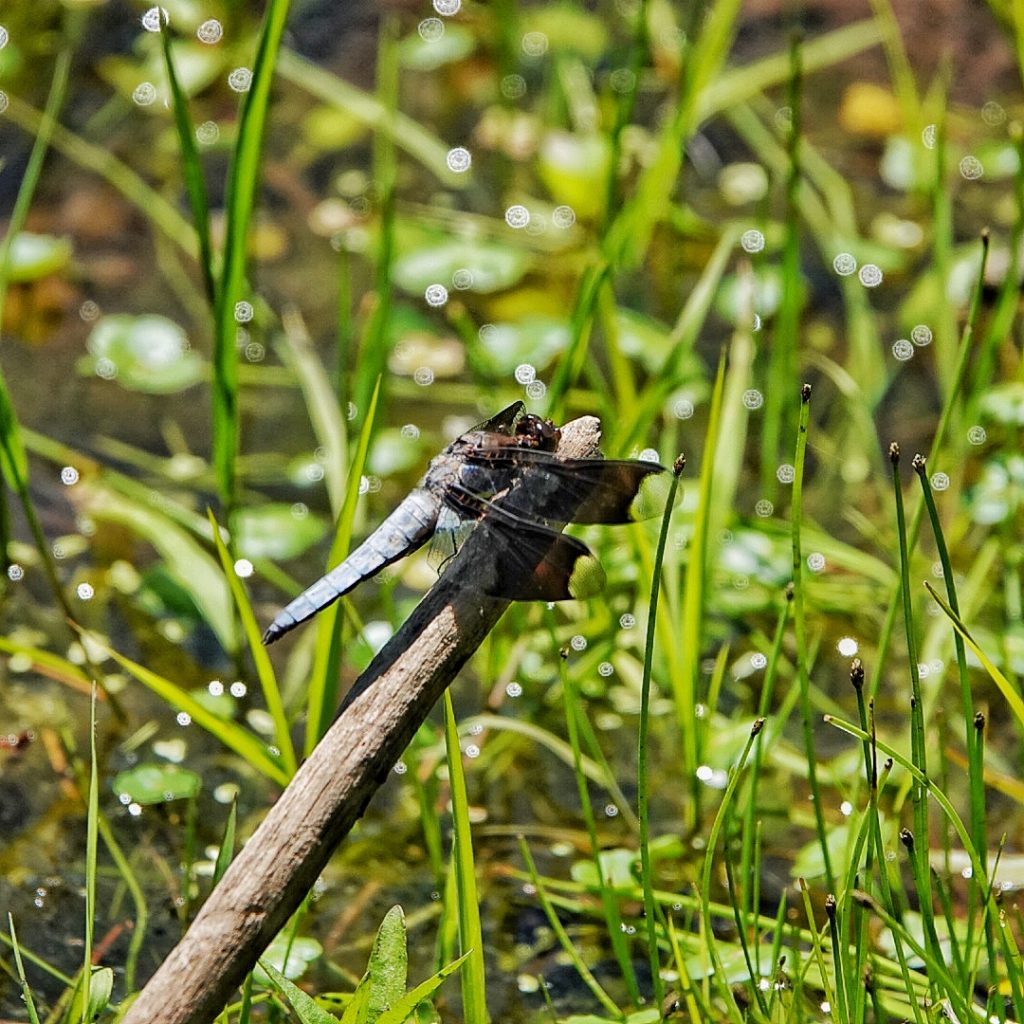
Range– “Found in the 48 contiguous states and the range continues south into Mexico. Found in these Canadian provinces: British Columbia, Manitoba, Ontario, Quebec, New Brunswick, and Nova Scotia.” Species Plathemis lydia – Common Whitetail – BugGuide.Net
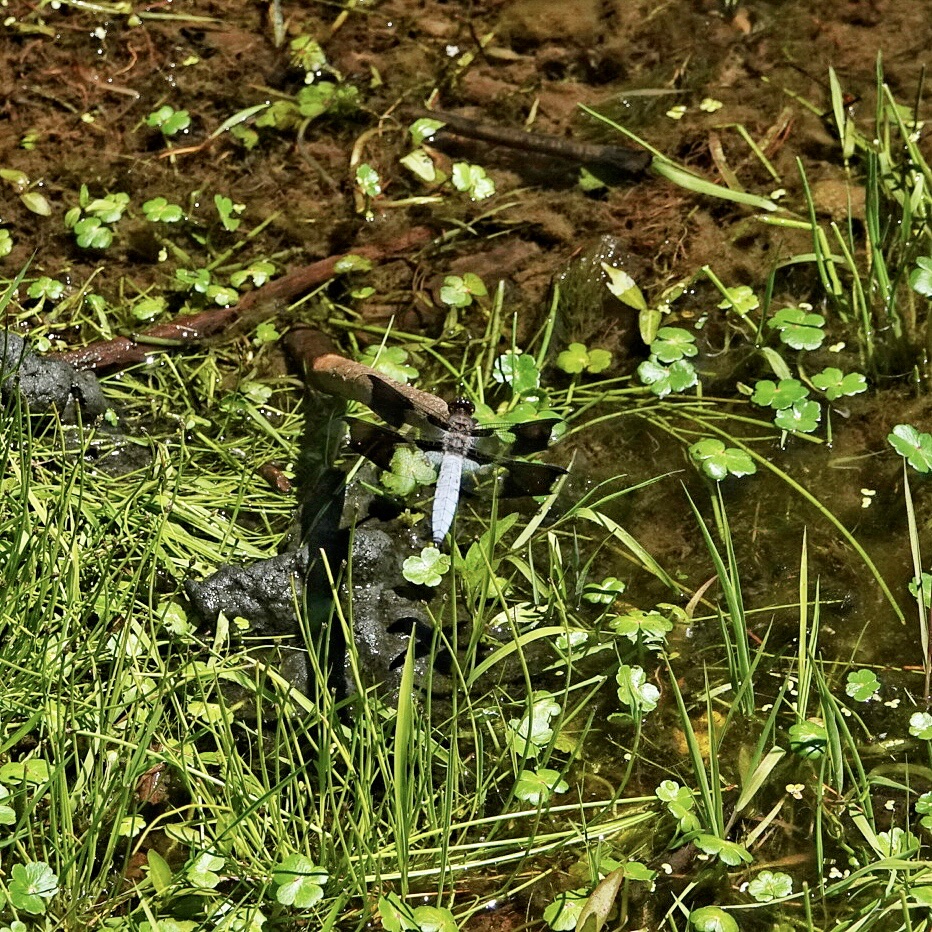
Eats– “Adults feed on flying insects.” Species Plathemis lydia – Common Whitetail – BugGuide.Net,including damselflies and smaller dragonflies;
Eaten by– Presumably any insectivores (mostly birds, but also fish and amphibians) which can catch them; nymphs are prey for most aquatic insectivores.
Adults active– “Primarily a summer species, but may be seen as early as late April and as late as November 1st.” Species Plathemis lydia – Common Whitetail – BugGuide.Net
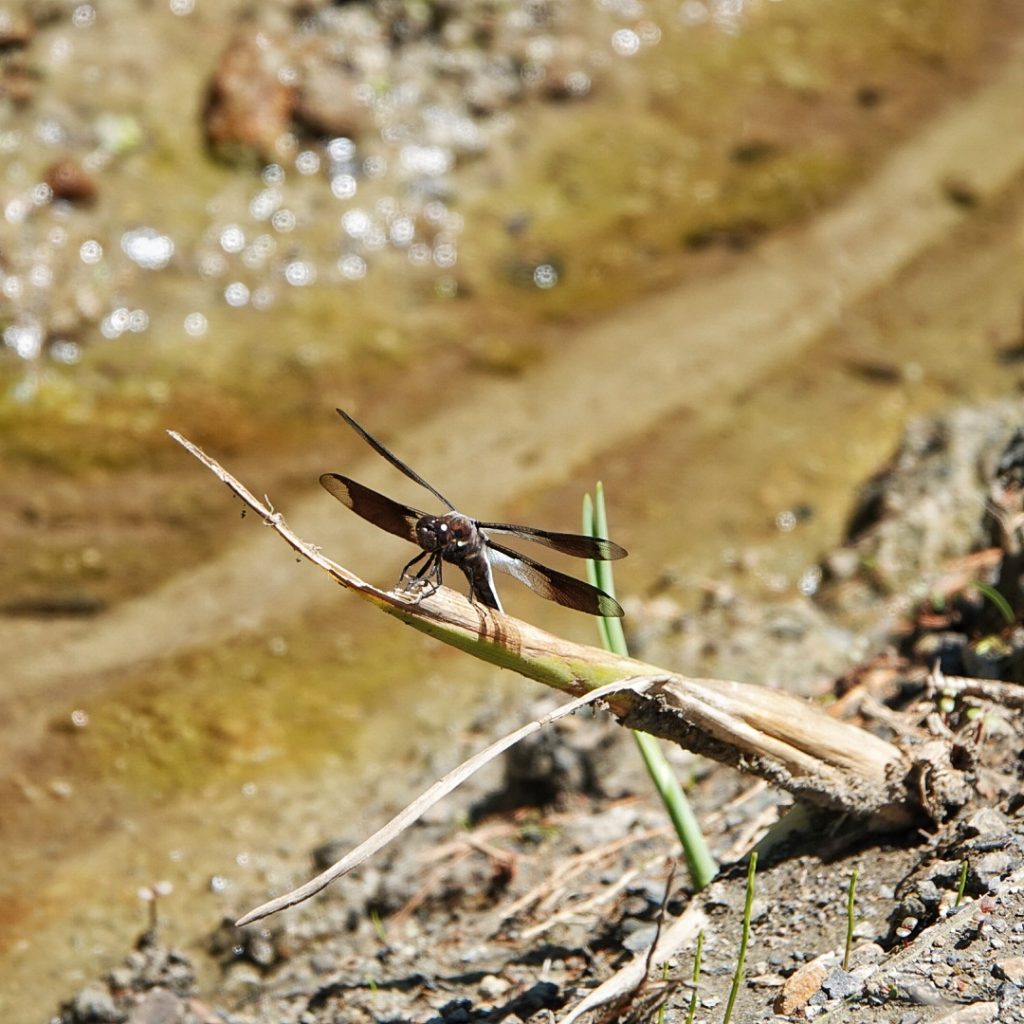
Life cycle– Apparently univoltine; larvae mature in a year; copulate in flight, and oviposit directly afterwards; oviposit near floating vegetation or clumps of mud, laying 25-50 eggs per tap; females lay up to 1000 eggs total; may live up to 36 days as an adult; nymphs “can tolerate a high organic load and low dissolved oxygen. In some organically polluted habitats with zero dissolved oxygen, they are the only odonate nymphs present.” Kenneth Tennessen, “Dragonfly Nymphs of North America”; 2020;
Etymology of names– I can find no explanation at all for the etymology of Plathemis, and though -themis appears in the related genus Erythemis, where it means ‘rule of law’, I can find no Latin or Greek words for pla-. The specific epithet lydia seems likely to be someone’s name, but I cannot find any information on this either.
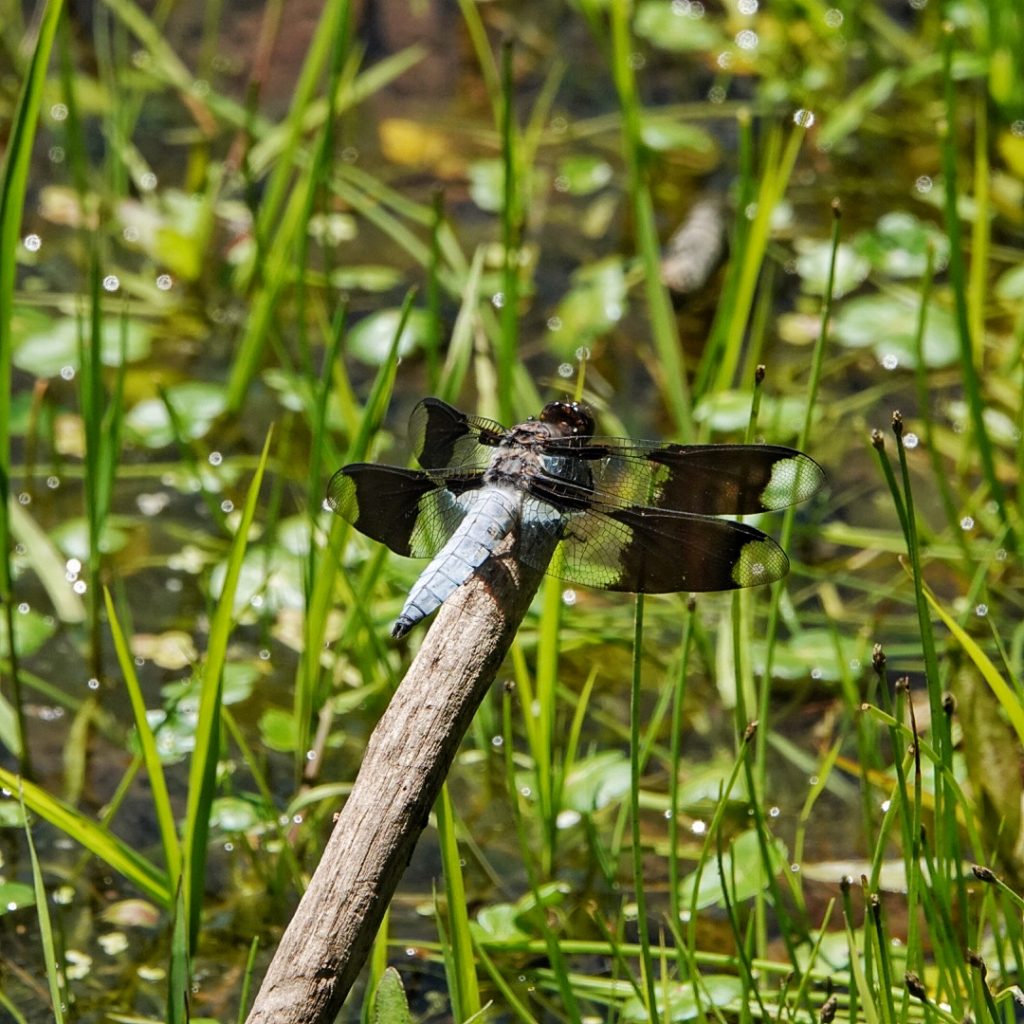
Species Plathemis lydia – Common Whitetail – BugGuide.Net
Common Whitetail Dragonfly – North American Insects & Spiders
Common Whitetail | Missouri Department of Conservation
https://en.wikipedia.org/wiki/Common_whitetail
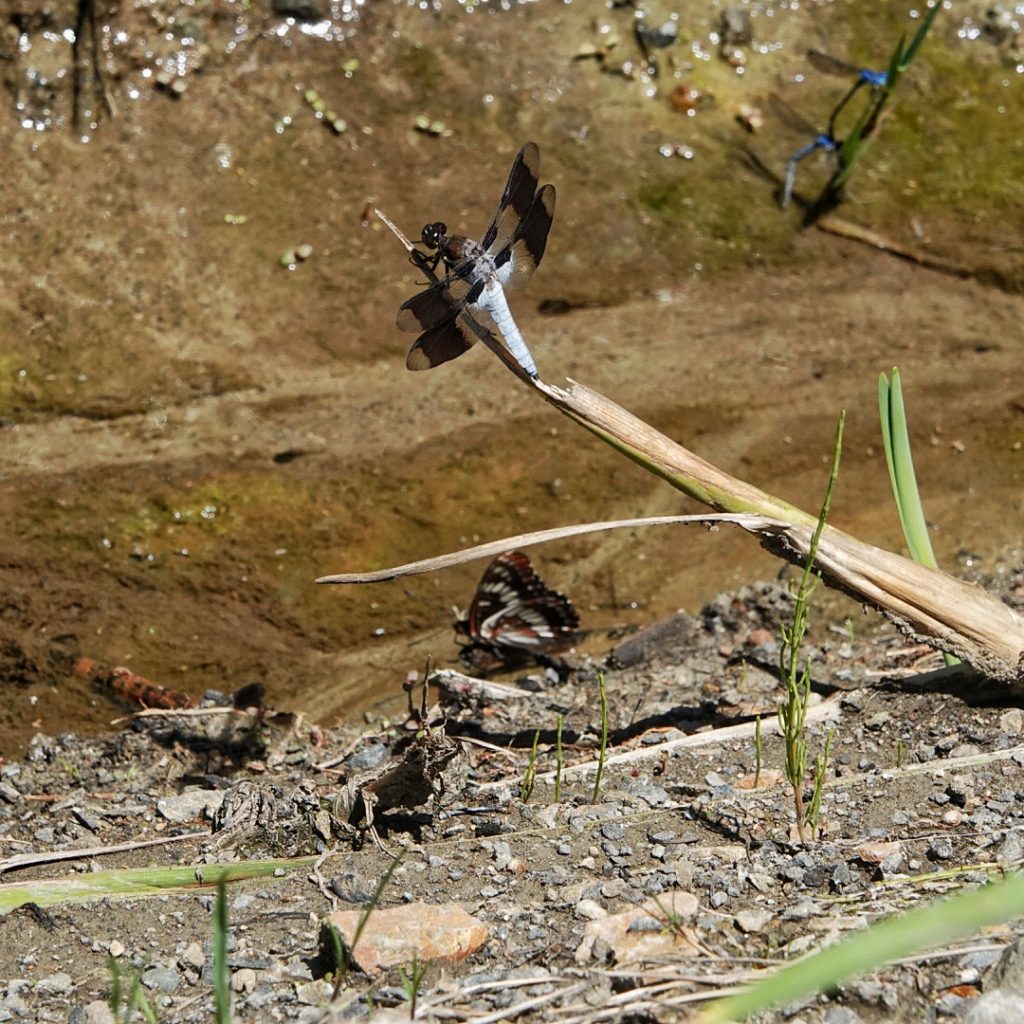
Great information and written beautifully.
Thank you, Theresa!